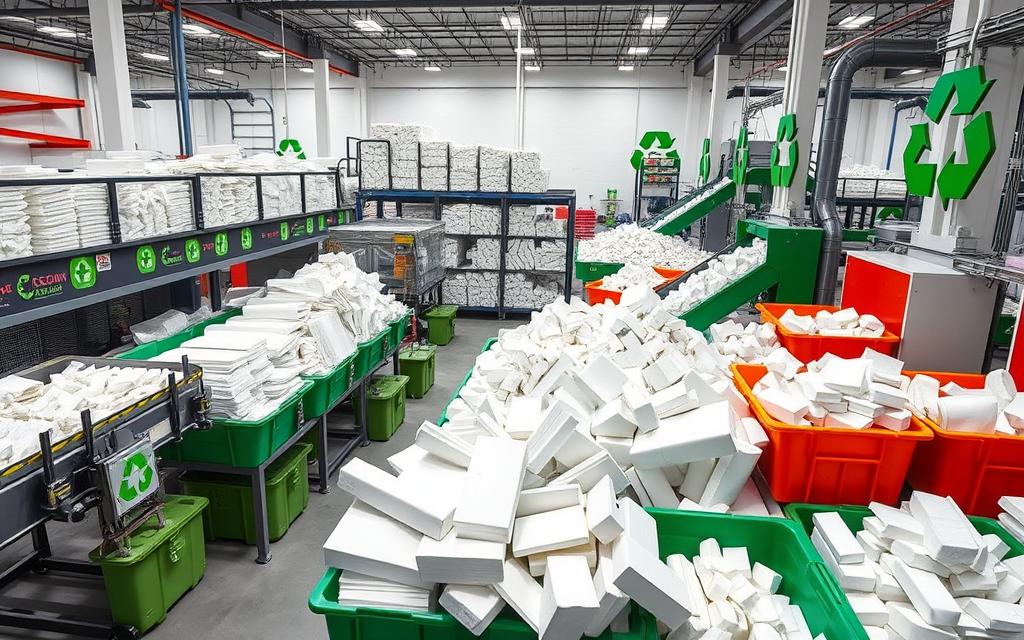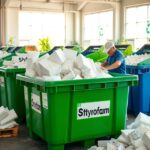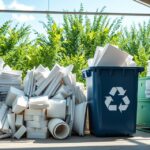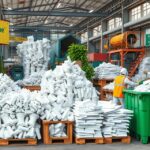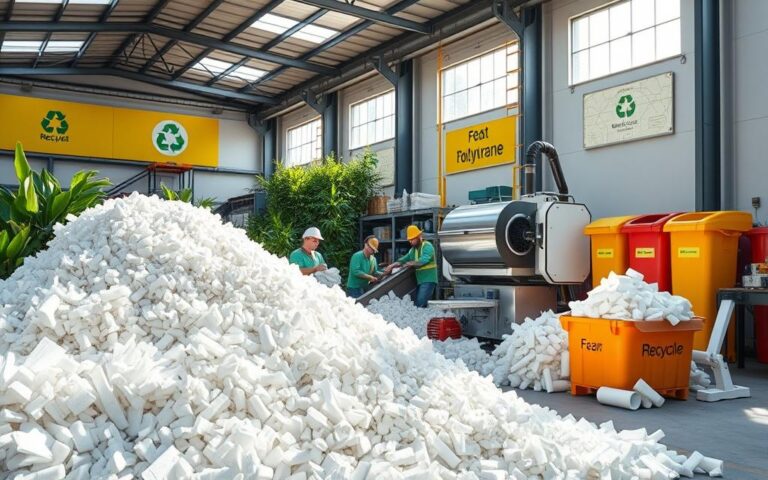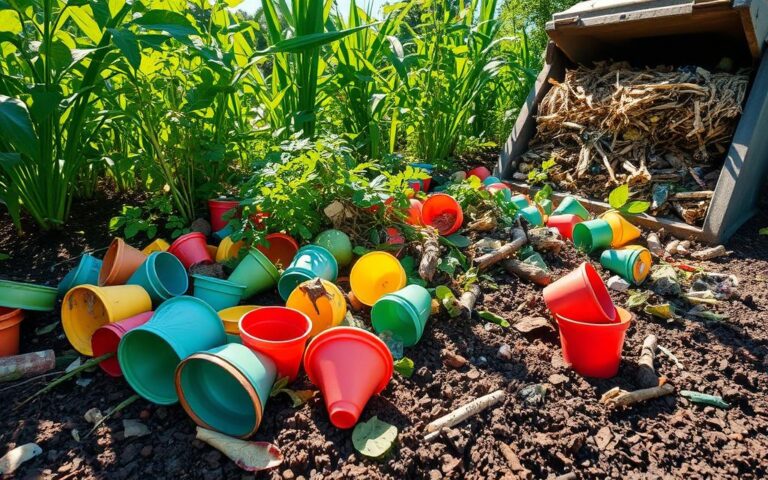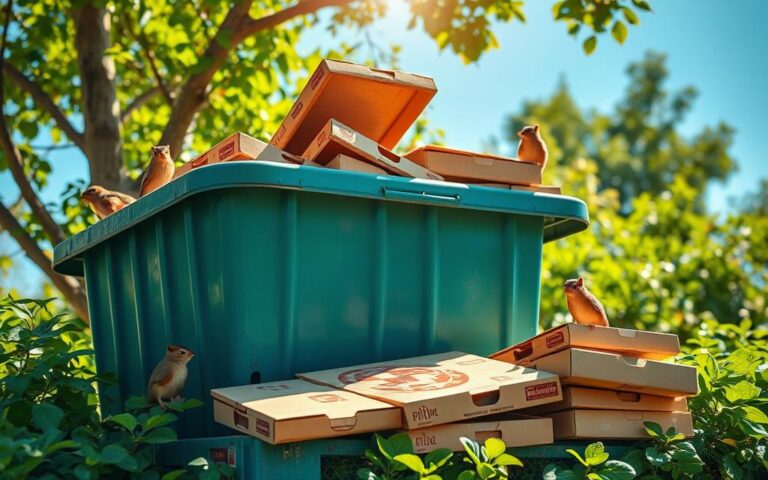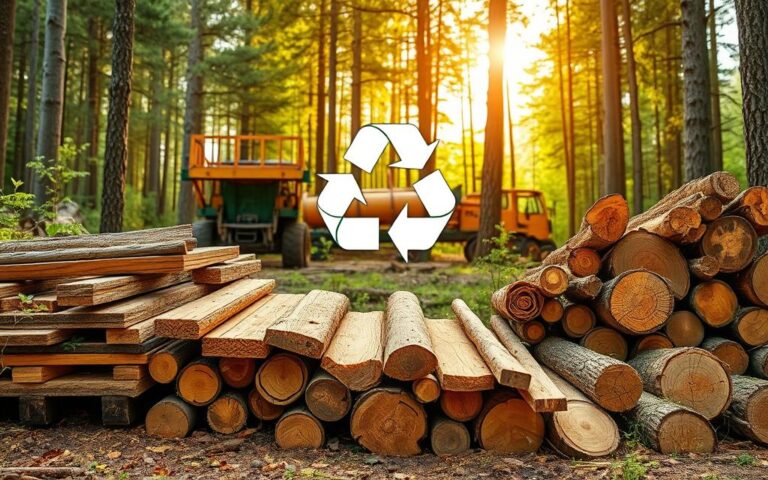Is Foam Recycling Possible? How to Do It Responsibly
Foam is becoming more common in our lives, leading to questions about recycling it in a green way. As we look for more sustainable packing options, understanding foam’s environmental toll is crucial. Polystyrene, a significant waste contributor, can take over 500 years to break down in landfills, highlighting the need for better recycling.
Many don’t know that recycling Styrofoam is the greenest way to dispose of it. It cuts down the need for new materials. Yet, recycling expanded polystyrene (EPS) can be expensive. This makes new EPS production more attractive to makers. Hence, many recycling programs don’t take Styrofoam, showing the urgent need for more knowledge and education on this matter.
This article looks into responsible foam recycling, its challenges, and alternatives to reduce foam’s environmental harm. It aims to raise awareness and help people use and toss foam in a more responsible way.
Understanding Foam Waste and Its Environmental Impact
Foam packaging is common in various industries, especially for consumer goods. Items like electronics and food use foam for safe shipping. It’s crucial to grasp the impact of foam waste on our planet’s health.
The Prevalence of Foam in Packaging
Every year, the average person throws away about sixty pounds of Styrofoam. This adds a lot to the waste in landfills. Companies are looking for better options to lower their environmental footprint. For instance, polyethylene foam is both strong and fully recyclable, making it a greener choice.
Environmental Consequences of Foam Waste
Styrofoam waste is a big problem for the environment. It doesn’t break down and can last for hundreds of years. This accumulation harms land and sea, putting animals at risk. Foam can easily end up in rivers and oceans, threatening sea creatures.
Recycling Styrofoam can help reduce its negative effects. It saves space in landfills and lessens environmental damage. Teaching people about proper foam disposal is key to fighting pollution. This knowledge can lead us to prefer more eco-friendly packaging options.
Is Foam Recycling Possible?
Foam recycling might seem hard at first. But, if we learn about the different types of foam and the challenges, we can find good ways to recycle. It’s key to know which foams can be recycled and what hurdles are in the way. This knowledge helps us recycle better and take care of our planet.
Types of Foam Recyclable
There are many types of foam, and not all can be recycled the same way. Expanded Polystyrene (EPS), or Styrofoam, is often used for packaging. Yet, it’s rarely accepted in curbside recycling because its code is “X6.” However, Polyethylene (PE) foam, which is more flexible, has a different recycling code. This makes it 100% recyclable and welcomed at many recycling centres.
The recycling codes are very important. For instance, EPS can be turned into things like plastic timber and coat hangers if recycled right. Polyurethane (PU) foam, used in packaging, can become insulation or dense panels. Knowing the recycling codes helps us only throw the right materials into foam recycling facilities.
Challenges in Foam Recycling
Even with new recycling technology, recycling foam is tough. Currently, only 12% of foam is recycled, with just 6% of that from consumer packaging. One big problem is Styrofoam’s light weight. It takes up too much space, making it hard to handle efficiently. It must be pressed into very dense blocks before it can be recycled.
Many people don’t know which foams can be recycled. This leads to “wishcycling,” where people hope non-recyclable foam can be recycled, causing more harm than good. The lack of consistent recycling rules doesn’t help either. Therefore, teaching people about what can be recycled is crucial for better foam recycling. For more info, check out this resource.
| Type of Foam | Recycling Code | Recyclability | End Products |
|---|---|---|---|
| Expanded Polystyrene (EPS) | X6 | Limited | Synthetic timber, coat hangers |
| Polyethylene (PE) | Various | 100% recyclable | New foam products |
| Polyurethane (PU) | Various | Recyclable | Insulation materials, panels |
How to Recycle Foam Responsibly
Recycling foam needs attention to local resources and careful planning. With waste management concerns rising, knowing how to deal with foam materials is key for protecting our planet.
Finding Local Foam Recycling Facilities
To start recycling foam, it’s essential to find local facilities. Many places have foam recycling, but checking community resources is important. Earth911 gives a list of local centres that take foam. Some places, like certain parts of California and San Antonio, Texas, even accept Styrofoam in curbside bins. Knowing what your area does helps manage foam waste well.
Preparing Foam for Recycling
Getting foam ready for recycling makes sure it’s processed correctly. Starting with cleaning foam and waste separation is critical. Key actions include:
- Remove any tape or stickers for easier recycling.
- Separate foam packaging from other stuff, making sure to only drop off what’s allowed.
- Make sure to check which foam types the facility takes.
If you take these steps, your foam is more likely to be accepted for recycling.
Alternative Uses for Foam Packaging
There are lots of other ways to use foam besides just recycling it. Seeing foam as a resource opens up creative options. You could:
- Use foam for garden drainage.
- Make home decor or holiday ornaments.
- Create art or furniture features.
Trying these ideas can cut down on landfill waste and encourage greener living.
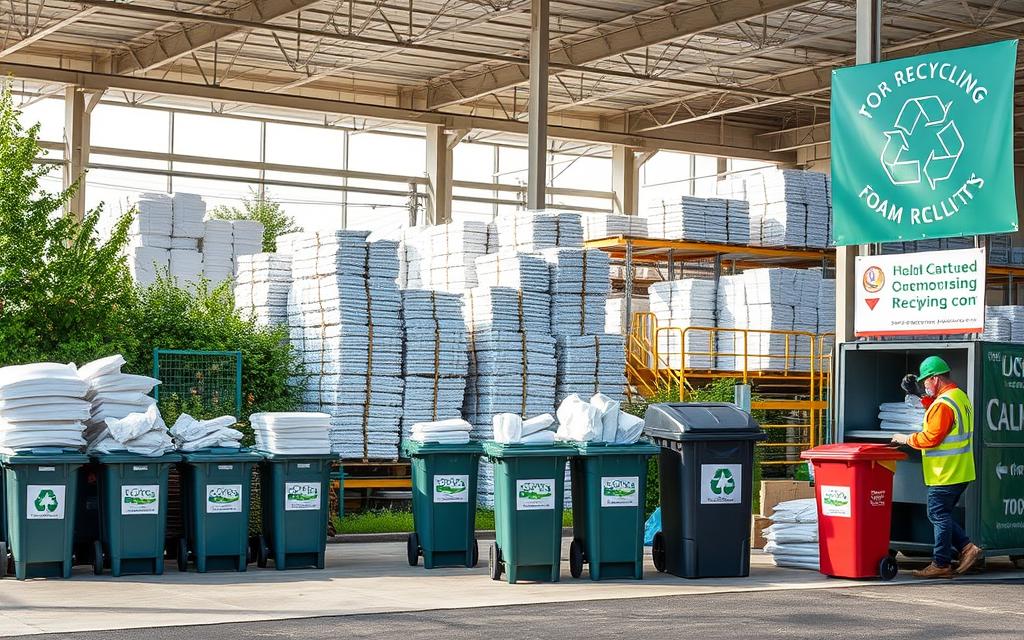
| Foam Type | Accepted by Local Facilities | Alternative Options |
|---|---|---|
| Expanded Polystyrene (EPS) | Check local guidelines | Crafts, drainage solutions |
| Foam Peanuts | Often not accepted | Reuse in packaging |
| Foam Containers | Varies by community | Repurpose for decorative items |
Common Methods for Foam Repurposing
Repurposing foam can boost your green gardening and spark your creativity with DIY foam projects. Learn to turn foam packaging into useful foam drainage solutions. Also, explore fun crafts that are good for the planet and your house.
Creating Drainage Solutions for Plants
Foam is great for making drainage systems for non-edible plants. Using foam at the bottom of containers helps water flow well. This prevents root rot. Here’s a simple guide to using foam for this:
- Cut foam into small pieces – Chop it into uniform bits to fit in plant pots.
- Layer the foam – Put a foam layer in the pot to cover the bottom well.
- Add soil and plants – Add soil on the foam. Then put in your plants.
This approach is eco-friendly gardening at its best. It reuses waste and enhances plant care. Ditching gravel for foam is lighter and more sustainable.
Crafting DIY Projects with Foam
Don’t let foam packaging go to waste. Use it for creative recycling projects. Here are some craft ideas to turn foam into useful home decor:
- Wall art – Use foam to make interesting shapes for your walls.
- Furniture accents – Add comfy cushioning to chairs or tables with foam.
- Ornaments – Craft unique decorations for special occasions or seasons.
Tackling these DIY foam projects encourages being inventive. It lets people transform trash into treasures. With creativity and the right supplies, old foam can become something brand new.
Innovative Solutions for Foam Waste
Innovative applications of foam are improving the environment and making buildings warmer. This eco-friendly material is key in new homes and offices. It traps heat well, making spaces more cost-effective to heat.
By using foam in places like garages and lofts, owners save on energy. They also reduce their harm to the planet.
Using Foam in Insulation
Foam insulation works well in many parts of a house. It keeps temperatures stable and cuts down on noise. If made fire-safe, foam remains a top choice for keeping warm and safe.
Recycled foam helps build green structures. It also ensures we use less, supporting a healthier planet.
Environmental Benefits of Foam Floating Islands
Foam islands are a clever way to reuse foam and help pond life. They make homes for animals and plants. Over time, these islands turn into mini-ecosystems.
Creating these islands improves water quality. It brings people together to care for nature.
| Advantage | Description |
|---|---|
| Thermal Efficiency | Foam insulation provides exceptional thermal resistance, reducing energy consumption. |
| Eco-Friendly | Utilises recycled materials, promoting sustainable building practices and minimising environmental impact. |
| Biodiversity Support | Floating islands enhance pond ecosystems, fostering increased biodiversity through habitat creation. |
| Water Quality Improvement | Plants on foam islands contribute to better water filtration and quality in aquatic environments. |
Conclusion
Understanding foam waste shows we need everyone to help with foam recycling. Expanded polystyrene (EPS) shows that recycling alone won’t fix everything. Recycling reduces waste and helps the environment but it’s expensive and uses lots of energy.
Moving towards environmentally responsible actions can make a real difference. We can reuse foam in creative ways or for insulation. If you want to know more about recycling EPS, check this informative resource.
By knowing more and taking part in recycling or other solutions, we can cut our environmental harm. If we all make these changes, we’re building a cleaner, sustainable future for all.
FAQ
Is all foam recyclable?
Not all foam is recyclable. Look for recycling codes “X6” for Expanded Polystyrene (EPS) and “NP6” for Extruded Polystyrene Foam (EFS) to identify recyclable types. Always check what your local recycling centre accepts.
How does foam waste impact the environment?
Foam waste is hard on the environment because it doesn’t break down quickly. It can take hundreds of years to decay. This waste fills up our landfills and harms ocean life, putting our ecosystems at risk.
What challenges do recycling facilities face with foam?
Recycling centres struggle with a few issues when it comes to foam. They lack the right equipment to process it, find it hard to keep it clean, and often receive non-recyclable materials due to confusion. This makes recycling foam a big challenge.
How can I find local foam recycling facilities?
For local foam recycling spots, try Earth911 or your city’s waste management website. They can tell you where to take your foam for recycling.
What preparations are needed before recycling foam?
Make sure the foam is clean and free of things like tape or food before recycling. Sorting it from other recyclables helps ensure it can be processed properly.
What are some creative ways to repurpose foam packaging?
Foam packaging has many uses beyond the bin. It can help with plant drainage, make festive decorations, or add a unique touch to furniture. Use your creativity to give it a new life!
How can foam be used in home insulation?
Foam’s good at keeping heat in, making it great for insulating places like garages and attics. Using it can cut down on your energy bills and make your home more eco-friendly.
What are foam floating islands, and how do they help the environment?
Foam floating islands provide a home for water plants and animals, boosting the health of aquatic environments. They support wildlife, promote greenery, and clean the water, making a positive impact on local ecosystems.

